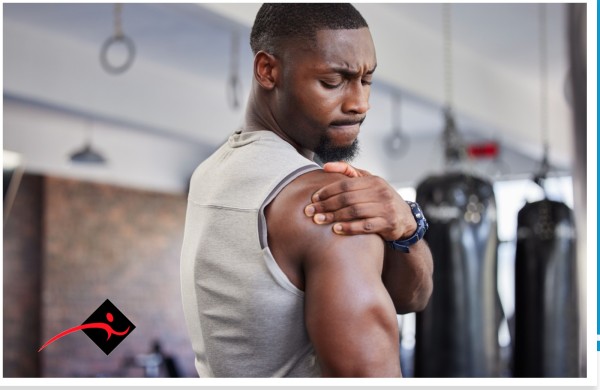Rotator Cuff Injuries Repair Recovery and Treatment Options

United States, 29th May 2025 – The rotator cuff plays a vital role in shoulder function, helping you lift, rotate, and stabilize your arm. It’s made up of four muscles and their tendons, all working together to support the shoulder joint. When one of these tendons is torn—either from a sudden injury or ongoing strain—it can cause sharp pain, stiffness, and a noticeable loss of strength. Fortunately, both surgical and non-surgical treatments are available to help patients regain mobility and reduce discomfort.
What Causes Rotator Cuff Damage?
Rotator cuff injuries can happen in a single moment or develop slowly over time. Acute injuries might come from lifting a heavy object, falling, or making a sudden, jerking motion with the arm. However, many rotator cuff tears are the result of repetitive motion or long-term wear—especially among athletes, older adults, and those in physically demanding jobs like construction or painting.
Common symptoms include:
- Shoulder pain during movement or while sleeping
- Arm weakness, particularly when lifting or reaching overhead
- A crackling or popping sensation in the joint
- Trouble performing everyday tasks like combing your hair or putting on a shirt
Non-Surgical Treatments for Relief
Not all rotator cuff tears require surgery. In fact, partial tears and inflammation can often be managed with conservative treatments aimed at reducing pain and restoring motion.
Here are several non-invasive treatment options:
- Physical Therapy:
A targeted rehab program can strengthen the shoulder, improve range of motion, and prevent further damage. Therapists guide patients through exercises that restore function gradually and safely. - Activity Adjustments and Rest:
Reducing strain on the shoulder by limiting overhead activities gives the tendon time to heal and reduces pain. - Pain Management:
Anti-inflammatory medications like ibuprofen or naproxen can ease discomfort. For more persistent pain, cortisone injections may be used to provide temporary relief and reduce swelling. - Ice and Heat Therapy:
Cold packs help minimize inflammation in the early stages, while heat can relax muscles and improve blood flow during recovery.
These approaches are most effective for minor tears, older adults with low physical demands, or patients managing long-standing shoulder pain.
When Surgery Is the Right Move
If the rotator cuff tear is severe or conservative care hasn’t improved symptoms after several months, surgery may be recommended. Surgical repair is often the best option for younger, active individuals or anyone with a full-thickness tear that affects shoulder function.
Surgical options include:
- Arthroscopic Surgery:
A minimally invasive technique using tiny tools and a camera to repair the tendon. This procedure generally results in less post-operative pain and a faster recovery. - Mini-Open Repair:
A hybrid approach that combines arthroscopy with a small incision for better access, commonly used for moderately complex tears. - Traditional Open Surgery:
Reserved for larger or complex injuries, this method involves a larger incision and is sometimes needed for complete tendon reattachment.
What to Expect During Recovery
Healing after rotator cuff surgery is a gradual process. You’ll likely wear a sling for several weeks to protect the joint, followed by a structured physical therapy program. Early rehab focuses on gentle, passive movements. Over time, your therapy will progress to active motion and strengthening exercises.
Most people return to light activities within 4 to 6 months, though a full recovery for athletes or manual laborers may take closer to 9 to 12 months. Following your physical therapy plan consistently is key to regaining strength and flexibility.
Final Thoughts
Rotator cuff injuries can interfere with even the simplest of daily tasks, but they don’t have to be permanent. Whether treated through physical therapy or surgery, most patients can make a full recovery with the right care. If you’re experiencing persistent shoulder pain or weakness, don’t wait—consult a medical professional to determine the best path forward and start your journey back to comfort and mobility.
Follow us on Facebook and Twitter, by Sports Medicine Surgeon, Rotator Cuff Repair, and Best Orthopedic Surgeon in Texas.
This article is for general purposes only and should not be considered medical advice. If you have any medical issues or questions, consult your physician.
Media Contact
Organization: Dr. Kevin Crawford, Orthopedic Surgeon
Contact Person: Office Manager
Website: https://lubbocksportsmed.com/lubbock-sports-doctors/dr-kevin-crawford/
Email: Send Email
Country:United States
Release id:28416
View source version on King Newswire:
Rotator Cuff Injuries Repair Recovery and Treatment Options
This content is provided by a third-party source.. King Newswire makes no warranties or representations in connection with it. King Newswire is a press release distribution agency and does not endorse or verify the claims made in this release.
Disclaimer: The views, suggestions, and opinions expressed here are the sole responsibility of the experts. No Research Raptor journalist was involved in the writing and production of this article.